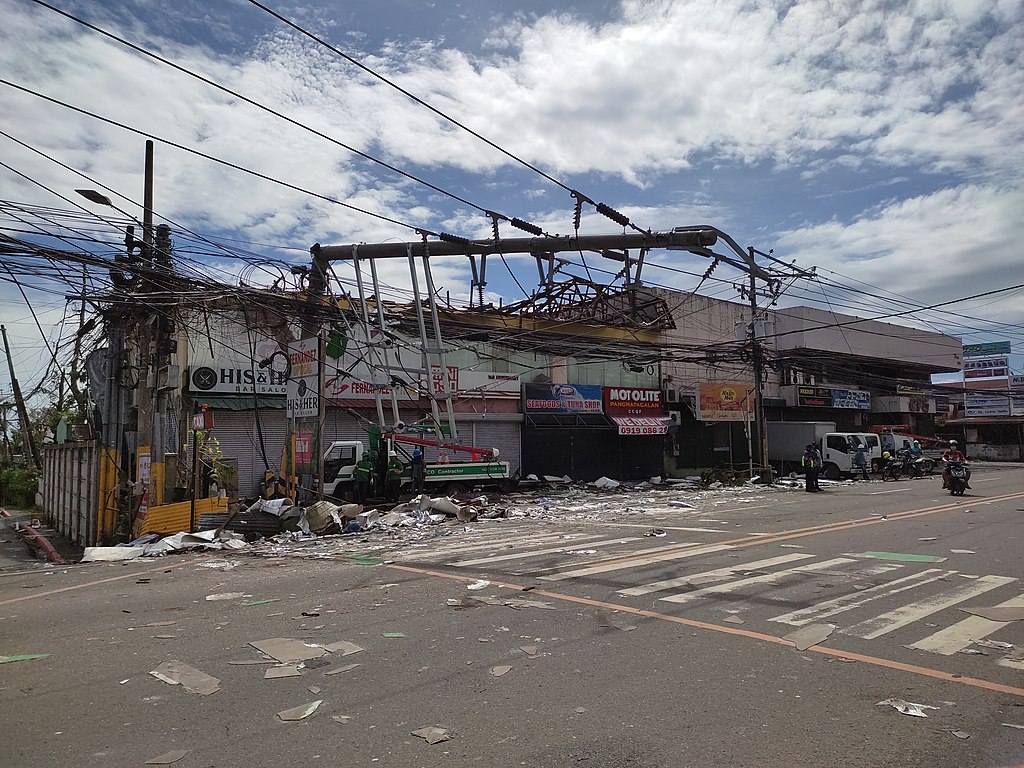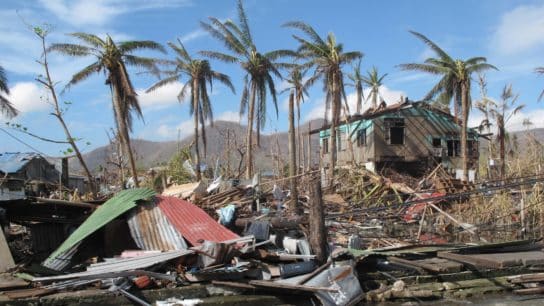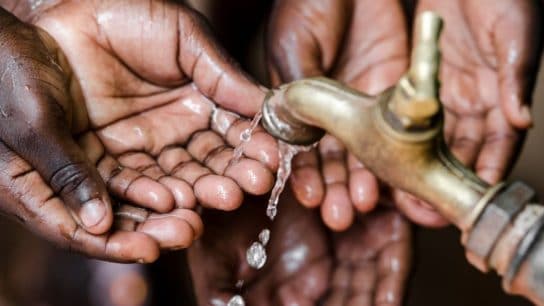More than a month after Super Typhoon Rai (Odette) pummelled the Philippines with torrential rain, raging floodwaters, storm surges and fierce winds, relief teams have become increasingly concerned by a “worsening humanitarian situation” faced by vulnerable, high-risk communities in the country’s worst affected areas, with hundreds of thousands of civilians still without access to adequate shelter, food, clean water, and protection support following the trail of catastrophic devastation wrought by one of 2021’s deadliest natural disasters.
—
Rai, the fifteenth and strongest typhoon to strike the Philippines in 2021, tore through the archipelagic nation’s southern and central islands from December 16 to 17 as a powerful Category 5 storm – ripping off roofs, toppling trees, and knocking out power as residents were preparing to gather for Christmas holiday celebrations. It made nine landfalls across the provinces of Surigao del Norte, Bohol, Cebu, Dinagat Islands, Southern Leyte, Negros Oriental and Palawan, packing gusts of up to 270 km/h (168 mph) and maximum sustained winds of 195 km/h (121 mph) near the centre.
Official government reports have placed the death toll at 406, with 78 still missing. At least 680,000 people have lost their homes or main source of income, in a storm some relief teams have compared to 2013’s Super Typhoon Haiyan (Yolanda) – which left 7,300 people dead and four million homeless in its wake.
But more than a month on, the situation on the ground remains dire for many disaster-ravaged communities and towns. Relief teams say recovery efforts could take as long as six months, with the current supply of humanitarian aid largely insufficient in helping the hardest-hit regions rebuild their livelihoods.
“Humanitarian aid covers the immediate need of what people need to survive, but [we also need support] for the mid and long-term recovery,” Jermaine Baltazar Bayas, Oxfam’s humanitarian lead in Asia, told Climate Home News. “This has to be embedded in regions’ development programmes and there has to be a focus on protecting assets and helping people restart their livelihoods.”
Bayas’ comments come as survivors of Rai’s onslaught grow increasingly frustrated with the Philippine government’s delayed response in providing aid, with some residents begging off streets for scraps of food in the worst affected towns as severed power, communication lines and record-high COVID-19 cases continue to hamper relief efforts for many hard to reach areas.
The International Federation of Red Cross and Red Crescent Societies (IFRC) has also warned of a “mounting health crisis” in many impoverished regions, after nine people were reported to have died in the Dinagat Islands and neighbouring Siargao due to dehydration caused by diarrhoea amid irregular water supply and rising food shortages, according to the Philippine health department’s regional office.
You might also be interested in: The Biggest Climate Change Events in 2021
In response to the many challenges faced by ongoing recovery efforts, the United Nations earlier this month launched an emergency appeal of $107 million in aid to assist more than half a million displaced Filipinos, with the World Food Programme (WFP), the food-assistance branch of the United Nations, having requested $25 million of the appeal to cover for food, telecommunications, and logistical support.
“The situation, of course, is being worsened now because we have continued rains,” says World Food Programme Philippines Country Director Brenda Barton. “We have communities that cannot go into houses and are already in evacuation centres. And COVID-19, just like in other parts of the world, is ripping through the Philippines’ highly dense population,” she added, highlighting communities’ increased worries about nutrition emergencies setting in.
Amid its hasty relief efforts to deliver much-needed supplies, the United Nations noted that the extent of the damage caused by Rai was “badly underestimated” in its initial assessments, with the destruction being far worse than initially anticipated.
“One month since the first landfall of Super Typhoon Rai we realise that we have badly underestimated the scale of devastation,” says Gustavo Gonzalez, the United Nations Resident Coordinator in the Philippines. “This is a very fragile region.”
As the Philippines struggles to pick up the pieces, many distraught residents are now left to yet again grapple with a familiar but harsh, painful reality. Communities left reeling by Rai are now left to wonder – what happens now? In order to avoid Rai from becoming a “forgotten crisis” for the typhoon-prone Southeast Asian nation, countries most responsible for the worsening impacts of climate change must be held accountable for the mounting costs of natural disasters elsewhere.
The unusual time and strength in which Typhoon Rai struck the Philippines is a grim call to action towards an escalating global climate crisis and should prompt government authorities, if not already, to further invest in resources that will better equip homes in vulnerable coastal communities exposed to the risk of more intensifying storms that could hit the region in the coming years. Before it’s too late.
Featured image by: Wikimedia Commons













